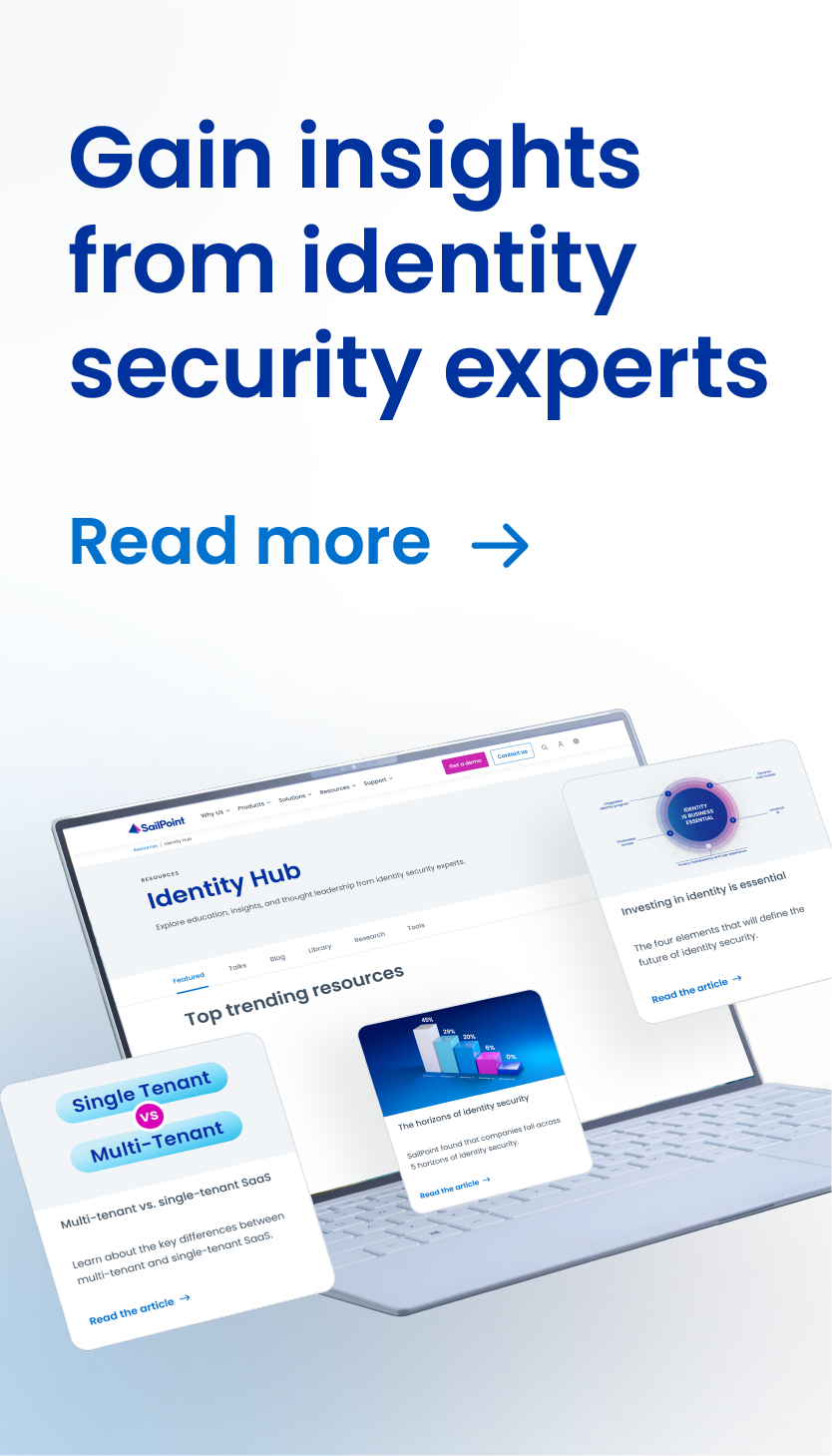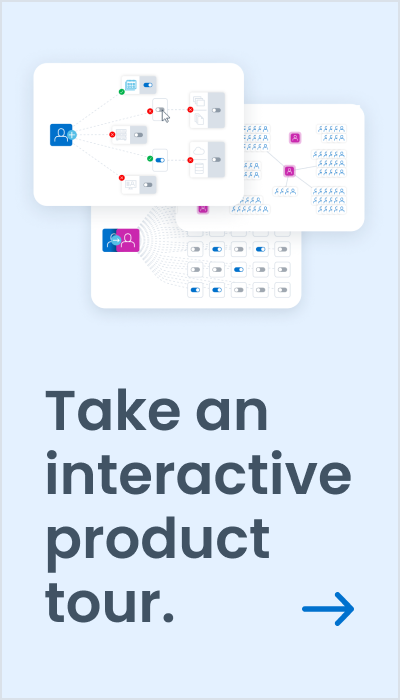How to Prioritize SaaS Security and Future-Proof Your Identity Program
This blog is the final installment of our three-part series exploring “What is SaaS Management?” In this post, we’ll look at how gaining total visibility and control of all access is essential in today’s enterprise — both for reasons of efficiency and security. Check out part 1 of the series, “The Danger of SaaS Sprawl: How Unsecured Apps Compromise Your Security.” You can check out part 2 of the series here, “How to Incorporate SaaS Management Into Your Identity Security Program.”
Improving cybersecurity is an urgent need for every organization, especially as attacks increase in frequency and severity. But the struggle comes when determining which steps to take and in what order. Implementing SSO, enforcing MFA, scaling Zero Trust — these are all important parts of the solution, but how do you prioritize? What’s the single biggest step a business should take to prepare for a secure future?
It’s a future that’s been significantly impacted by the pandemic. One where entire organizations might be 100% remote, permanently. And where employees now need to access dozens or even hundreds of different business applications daily, across a wide range of environments and on every conceivable device.
Companies that solve this challenge will be the winners. But how do you do it?
The answer is, you find the connecting thread that runs through everything – all business apps, user accounts, data repositories, cloud platforms, even ERP systems – and you make sure that thread is absolutely unbreakable. That thread is identity and the focus needs to be on its security.
Tap into the Security Superpower
Identity security is the ability to manage and govern access to every digital identity within an organization. It gives companies a way to simultaneously empower their workforce with more (and better) cloud-based tools while protecting the company against constantly escalating cybersecurity threats. It’s the ultimate superpower.
This is because digital identities provide the key that allows complex computing systems to easily determine which parts of an enterprise technology landscape users should be allowed to access. Identity security should be the foundation of a strong security program and the starting point for every strategy and every tool.
Because without a strong identity strategy in place, you’re wasting time and resources on downstream tooling like SSO and MFA before addressing the source. Keeping all identities current, coordinated, and secure – at all times – is what’s essential in order to get complete visibility. And as we’ve seen way too often, not doing this invariably leads to credential theft and ultimately yet another a catastrophic data breach.
As this series has explored, managing identities across SaaS applications is crucial. But there are many more pieces to this puzzle. Pieces like lifecycle management, which concerns an IT team’s ability to efficiently manage worker access as people join, leave, or change roles within a company. Or cloud governance, the degree of visibility and control that organizations have over platforms like AWS, Microsoft Azure, and Google Cloud. There’s also enterprise access risk governance, a critical part of preventing toxic access combinations that can result in serious risks and lead to compliance violations.
And there are many more dimensions to this. Like the importance of getting better visibility into unstructured data (such as company documents that are stored on Dropbox or Google Drive), the need to grant and certify access faster and more securely, even the ability to automate password resets to keep workers productive and free up IT teams. These are equally important elements of an identity program.
However, one thing is clear: Managing any one of these manually – much less all of them at the same time – is an impossible task. It’s simply beyond the capacity of even the most dedicated IT professionals. The secret is to leverage the power of artificial intelligence (AI) and machine learning (ML). Only by automating many of the elements mentioned above can organizations reap the full benefits of a comprehensive identity security solution.
Automation is Awesome
If identity security is the superpower, AI and ML are the force multipliers. They allow companies to manage all aspects of an identity program better, faster, and at scale. For example, AI can leverage peer group analysis, identity attributes, and real-time access activity to provide automated recommendations for access approvals and certifications, giving certifiers more insight to make informed decisions and prevent rubber stamping. Machine learning, meanwhile, can help a company get much better at identifying risky outliers so that potential conflicts of interest can be remediated immediately.
But perhaps the most powerful advantage has to do with Zero Trust, the security model where nothing in a corporate network is trusted by default and every access request has to be fully authenticated before being allowed. It’s a newer model that every organization needs to move to, and one that ratchets up the level of data analysis required to properly balance productivity with security. The only way to implement Zero Trust is with an identity security program powered by AI and ML, and those technologies rely on having accurate visibility into every identity across the org.
Businesses today spend a lot of time thinking about the risks posed by their competitors or by changing marketplace conditions. But as this series has explored, it’s actually the hidden risks that can be the most dangerous: compromised credentials you don’t know about that will lead to a major breach or toxic access combinations setting you up for fraud or compliance violations. Securing every identity needs to be your highest priority, and you can’t secure what you can’t see.
Isn’t it time you finally got total visibility and control over your entire operation? SaaS Management is the perfect place to start. Sign up now for a free two-week test drive of SailPoint SaaS Management and start seeing immediate benefits in efficiency and security. You can’t afford to wait.



Discussion